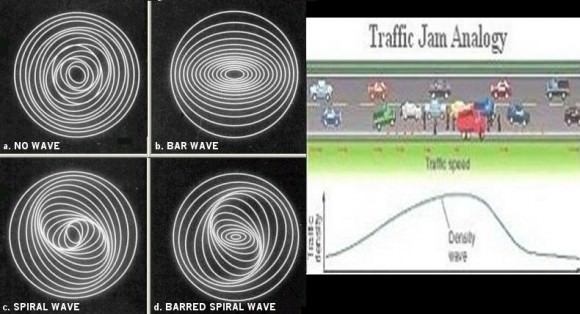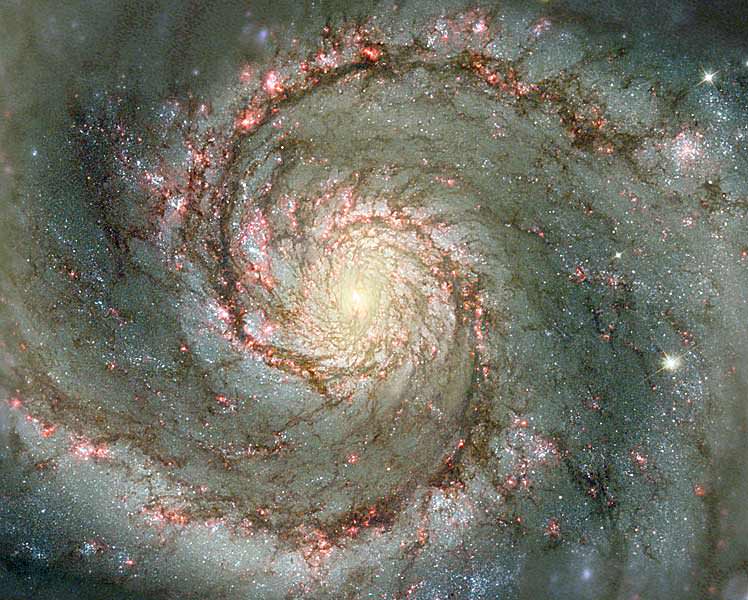[/caption]
A traditional galaxy evolution model has it that you start with spiral galaxies – which might grow in size through digesting smaller dwarf galaxies – but otherwise retain their spiral form relatively undisturbed. It is only when these galaxies collide with another of similar size that you first get an irregular ‘train-wreck’ form, which eventually settles into a featureless elliptical form – full of stars following random orbital paths rather than moving in the same narrow orbital plane that we see in the flattened galactic disk of a spiral galaxy.
The concept of secular galaxy evolution challenges this notion – where ‘secular’ means separate or isolated. Theories of secular evolution propose that galaxies naturally evolve along the Hubble sequence (from spiral to elliptical), without merging or collisions necessarily driving changes in their form.
While it’s clear that galaxies do collide – and then generate many irregular galaxy forms we can observe – it is conceivable that the shape of an isolated spiral galaxy could evolve towards a more amorphously-shaped elliptical galaxy if they possess a mechanism to transfer angular momentum outwards.
The flattened disk shape of standard spiral galaxy results from spin – presumably acquired during its initial formation. Spin will naturally cause an aggregated mass to adopt a disk shape – much as pizza dough spun in the air will form a disk. Conservation of angular momentum requires that the disk shape will be sustained indefinitely unless the galaxy can somehow lose its spin. This might happen through a collision – or otherwise by transferring mass, and hence angular momentum, outwards. This is analogous to spinning skaters who fling their arms outwards to slow their spin.
Density waves may be significant here. The spiral arms commonly visible in galactic disks are not static structures, but rather density waves which cause a temporary bunching together of orbiting stars. These density waves may be the result of orbital resonances generated amongst the individual stars of the disk.

It has been suggested that a density wave represents a collisionless shock which has a damping effect on the spin of the disk. However, since the disk is only braking upon itself, angular momentum still has to be conserved within this isolated system.
A galactic disk has a corotation radius – a point where stars rotate at the same orbital velocity as the density wave (i.e. a perceived spiral arm) rotate. Within this radius, stars move faster than the density wave – while outside the radius, stars move slower than the density wave.
This may account for the spiral shape of the density wave – as well as offering a mechanism for the outward transfer of angular momentum. Within the radius of corotation, stars are giving up angular momentum to the density wave as they push through it – and hence push the wave forward. Outside the radius of corotation, the density wave is dragging through a field of slower moving stars – giving up angular momentum to them as it does so.
The result is that the outer stars are flung further outwards to regions where they could adopt more random orbits – rather than being forced to conform to the mean orbital plane of the galaxy. In this way, a tightly-bound rapidly spinning spiral galaxy could gradually evolve towards a more amorphous elliptical shape.
Further reading: Zhang and Buta. Density-Wave Induced Morphological Transformation of Galaxies along the Hubble Sequence.

